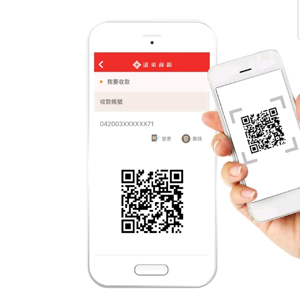11.2019 Life Guide
Guidance on proof of Internet electronic data (I)
Far Eastern New Century Corporation (China) Legal Dept. / Tang Siyu


According to the electronic signature law, data message refers to information generated, sent, received or stored by electronic, optical, magnetic or similar means, mainly including SMS, fax, email and web evidence, chat record, visit record, etc.
I. SMS
1. How to present it in court?
The SMS shall be presented by the court, and relevant information such as the content of the SMS, the sender (receiver), the time of sending (receiving), and the storage location shall be excerpted in writing as part of the court record. The evidentiary party may also voluntarily apply for notarization of SMS, and present the notarized document as evidence, at this time, SMS may not be presented.
2. What should be paid attention to when reviewing SMS?
(1) examine the sending and receiving (name and mobile phone number) and the time of sending and receiving; determine the relationship between the sending and receiving and the parties involved in the case.
(2) check whether there is any change in the location of SMS and whether there is any middle deletion.
(3) check whether the content of SMS is complete, whether there is contradiction with other evidences and whether it is related to the facts to be proved.
(4) if necessary, it can apply for identification or investigate with telecom operators.
II. Fax
Important faxes must be copied and backed up. Precautions include:
(1) verify the addressee and sender of the fax, as well as the number and time of sending and receiving the fax, so as to judge whether the relationship between the receiver and sender of the fax and the parties involved in the case, the process and content of the fax are true. When verifying the identity of both parties, attention shall be paid to whether their business cards or contract agreements have fax numbers.
(2) if there are "multiple faxes", it is necessary to check whether each fax connects with each other and whether it can be verified with other evidences. Through a series of faxes combined with other evidences, if it can be proved that there is continuity and relevance between the faxes, the evidential effect of the faxes can be recognized.
(3) for the examination of "single fax", the rules of evidence reinforcement can be applied, and other evidences can be used to support the examination.
III. email
1. How to show the email in court?
The proof party shall provide the source of the mail, including the sender, the addressee and the mail provider, the relationship between the above personnel and the parties to the case, the generation, receiving time and contents of the mail. When the evidence is presented in court, if both parties have no objection, they can directly present the paper copy of the email; otherwise, they should demonstrate in court on the computer and download and print the paper copy. If the email has been notarized, the notarial document can be directly presented as evidence.
2. How to judge the authenticity of e-mail?
The senders and recipients of e-mail are unique. Each e-mail corresponds to a unique user. The internet account, password and user name are also unique in relative time.
(1) verify the identity information of both parties to determine the relationship between the parties, and pay attention to whether the business card or the contract agreement of both parties has an email address. For email of work nature, some companies will have a corporate email.
(2) compare e-mail with other evidences, and ask relevant personnel to cross examine if necessary.
(3) check whether the way to obtain the email is to purchase from the Internet service provider or to register for free. In general, the former is more reliable.
(4) if necessary, ask the network service provider to provide assistance to directly preserve evidence from the transmission and storage links of e-mail. Or to identify, from the e-mail generation, storage, reliability of the transmission environment, whether tampering, etc., ask experts to put forward their opinions.
3. How to deposit the e-mail?
It is suggested to use a credible electronic evidence institution of the third party manufacturer to solidify and preserve the e-mail, check and analyze the authenticity of the e-mail, understand the relevant situation of the formation process of the e-mail, and then issue a special report by the judicial authentication department, which can effectively improve the reliability and the proving power of the e-mail evidence.
In addition to submitting e-mail, we should also actively look for other evidence materials to form a link with electronic evidence as much as possible, and form a chain of evidence, such as letters, recordings, confirmation messages, etc., to prove the authenticity of the content recorded in e-mail.
IV. web evidence
1. How to provide evidence for web evidence?
When presenting the web page as evidence, the adducer shall provide the web site and time, and present the web page in court to indicate the content of the web page associated with the case. At the same time, provide the paper copy of the web page for reference. With the consent of both parties, only the paper copy of the webpage can be presented, and the webpage will not be demonstrated. The above process should be fully reflected in the court record.
If the website has been notarized, the notarial document can be directly presented as evidence without demonstration in court. Generally speaking, the notarized web evidence has strong proving power.
2. How to examine the authenticity of Web evidence?
The parties to the lawsuit dispute the authenticity of the web evidence, which happens to be the main evidence to find out the facts of the case. Upon the application of the parties, they can ask the relevant websites to provide assistance, directly preserve the evidence from the transmission and storage links of the computer system, or ask the experts of the relevant units to identify, and put forward a special proposal from the reliability of the generation, storage, transmission and output environment of the web evidence Home views.
3. Electronic documents in the form of word
The archives or meeting records printed in the form of word cannot be used as evidence alone. Because word documents are easy to be tampered, forged, destroyed or destroyed, if there is no comparable copy, it is difficult to find out and judge. The countermeasures are as follows:
(1) if you send a word document, you should keep the sign in record, which can be used as indirect evidence to prove the authenticity of the word document.
(2) it is suggested that professional software should be used for the first-time preservation of word documents, which should be stored in the cloud after preservation, so as to prevent anyone from tampering and effectively improve the reliability and proof.
(3) because word documents are easy to be tampered with, when they are used as electronic evidences, they should collect other evidences as related evidences, form a chain of evidences in series, or use them together with paper documents.
V. electronic chat record
1. Notes to chat record:
(1) when collecting and preparing evidence, we should use accurate language to avoid online conversation (such as ha ha), threatening or intimidating statements, or induced questions.
(2) online chat shall confirm the identity of both parties, usually both parties use nicknames, and this part shall be conducted by the evidentiary party.
(3) check whether the content of chat is complete, whether there is contradiction with other evidences and whether it is related to the facts to be proved.
(4) if necessary, it can apply for authentication or investigate with the network operator. (to be continued)





















